The HPA Axis and Emotional Health: The Hidden Bridge Between Stress and Mind
Introduction
Why do some people stay calm under pressure while others feel overwhelmed by even small challenges? Why does chronic stress seem to drain not just energy, but joy, motivation, and mental clarity?
The answer lies deep within your biology — in a powerful communication network called the HPA axis.
Short for Hypothalamic–Pituitary–Adrenal axis, this system is your body’s central stress response engine. It links your brain, hormones, and nervous system to regulate everything from mood and immunity to sleep and emotional stability.
When the HPA axis is balanced, you feel grounded, energetic, and adaptable.
When it’s dysregulated, stress becomes chronic — leading to anxiety, burnout, depression, and emotional exhaustion.
Let’s explore how this fascinating system works, how stress can throw it off balance, and how you can restore it to strengthen your emotional health and resilience. 🌿
Looking for supplements for Emotional Health? Click here.
🧩 What Is the HPA Axis?
The HPA axis is a biological feedback loop that connects three key structures:
Hypothalamus (H): the brain’s stress command center.
Pituitary gland (P): the messenger that signals hormone release.
Adrenal glands (A): the producers of cortisol, adrenaline, and other stress hormones.
This axis regulates your body’s reaction to stress and helps maintain internal balance — or homeostasis.
🧠 How It Works
When you face a stressor — a tough conversation, a traffic jam, or emotional pain — the sequence unfolds like this:
The hypothalamus releases CRH (corticotropin-releasing hormone).
CRH stimulates the pituitary gland to release ACTH (adrenocorticotropic hormone).
ACTH travels through the bloodstream to the adrenal glands, prompting them to secrete cortisol and adrenaline.
Once cortisol levels rise, they feed back to the hypothalamus and pituitary to signal “mission complete,” reducing further release — in a healthy system.
This is the fight-or-flight response — the HPA axis in action.
When it functions properly, stress rises and falls naturally. When it malfunctions, the “off switch” fails — leading to constant activation, fatigue, and emotional imbalance.
🌊 The HPA Axis and the Stress Response

Your HPA axis evolved to protect you from short-term threats, like escaping predators or surviving danger. But in modern life, stress rarely ends. Instead of a quick surge, the system gets stuck in chronic activation.
That’s when problems begin.
⚡ Acute Stress (Short-Term)
Cortisol and adrenaline spike temporarily.
You feel alert, focused, and ready to act.
Afterward, hormones drop, and your body returns to balance.
🌀 Chronic Stress (Long-Term)
The HPA axis remains activated for days, months, or years.
Cortisol stays elevated or eventually crashes from overuse.
You experience fatigue, anxiety, sleep issues, and emotional burnout.
Essentially, the stress system that once protected you begins to harm you.
Looking for online therapy ? Click Here.
💞 The HPA Axis and Emotional Regulation
Emotions are biological experiences as much as psychological ones. The HPA axis controls the hormones that shape your mood, motivation, and capacity to handle change.
Cortisol and Emotion
Cortisol affects nearly every system in the body, including brain regions tied to emotional regulation — like the amygdala and prefrontal cortex.
Balanced cortisol = calm focus and adaptive emotion.
Excess cortisol = irritability, anxiety, overthinking, and sleep problems.
Low cortisol = apathy, fatigue, and emotional flatness.
Adrenaline and Alertness
Adrenaline helps you respond quickly in emergencies. But constant surges overstimulate the nervous system, leading to restlessness, impatience, and emotional volatility.
Feedback Loop and Self-Regulation
In a healthy HPA axis, cortisol feedback tells the brain, “The danger is over; you can relax.”
In a dysregulated axis, that message never arrives — the brain keeps firing stress signals, even when life is calm.
This explains why some people live in a constant state of emotional tension even when nothing is wrong externally. Their biology is stuck in survival mode.
🧬 The HPA Axis and Mental Health
An imbalanced HPA axis plays a role in nearly every emotional and mental health condition.
🧠 Anxiety
Overactive HPA signaling leads to persistent hypervigilance — the brain expects threat even in safe environments. Cortisol and adrenaline stay elevated, fueling worry and tension.
🌧️ Depression
In many people with depression, cortisol rhythm is disrupted — often higher in the morning and lower at night. Chronic stress also reduces serotonin and dopamine sensitivity, making joy and motivation harder to feel.
🔥 PTSD and Trauma
Trauma profoundly alters the HPA axis. In PTSD, cortisol feedback mechanisms break down, leading to exaggerated startle responses, flashbacks, and difficulty calming after stress.
💤 Burnout and Fatigue
Long-term stress eventually exhausts the adrenals. Cortisol production declines, leaving you drained, foggy, and emotionally numb.
Your HPA axis doesn’t just regulate hormones — it dictates how you experience life.
🌿 The Gut-Brain Connection: HPA Axis and the Microbiome
The HPA axis doesn’t act alone — it constantly communicates with your gut through the gut-brain axis.
Your gut microbiota (trillions of bacteria) produce neurotransmitters like serotonin, GABA, and dopamine, all of which influence stress resilience.
When stress activates the HPA axis, it can:
Increase intestinal permeability (“leaky gut”)
Disrupt beneficial bacteria
Trigger inflammation that feeds back to the brain
This creates a loop where stress affects digestion, and gut imbalance amplifies emotional instability.
🦠 A healthy gut = a calmer HPA axis = stronger emotional regulation.
⚖️ Signs of HPA Axis Dysregulation
Because the HPA axis influences nearly every body system, symptoms can vary widely.
🆙 Overactive (High Cortisol Phase)
Anxiety or panic attacks
Racing thoughts, insomnia
Sugar or caffeine cravings
Irritability or restlessness
Weight gain around the abdomen
⬇️ Underactive (Low Cortisol Phase / Adrenal Fatigue)
Chronic exhaustion
Emotional numbness or apathy
Low blood pressure or dizziness
Brain fog and poor concentration
Depressive or unmotivated mood
If you swing between these states, it’s often a sign that your HPA axis is struggling to self-regulate.
🌞 The Cortisol Rhythm: Key to Emotional Stability
Your HPA axis runs on a 24-hour rhythm that determines when cortisol rises and falls.
| Time | Normal Cortisol State | Emotional Impact |
|---|---|---|
| 6–9 AM | Peak (wakes you up) | Motivation and alertness |
| 12–2 PM | Decline | Stable focus |
| 6–9 PM | Low | Calm and recovery |
| Midnight–3 AM | Minimal | Deep rest and repair |
When this rhythm is disrupted (late-night work, blue light exposure, irregular meals), emotions become unpredictable and energy crashes follow.
Restoring this rhythm is one of the most powerful ways to heal HPA imbalance and reclaim emotional balance. 🌙
🌸 The Biology of Resilience: Resetting the HPA Axis
Resilience isn’t just mental toughness — it’s biological flexibility. It’s your body’s ability to activate stress when needed and deactivate it when safe.
Here’s how to build that flexibility through HPA axis regulation:
🌤️ Mindful Mornings
Get 10 minutes of natural sunlight to reset circadian rhythm.
Avoid checking your phone first thing — digital cortisol spikes your system.
Practice gentle breathwork or gratitude to start the day in calm activation.
🧘 Morning calm creates hormonal balance for the rest of the day.
🥦 Nourish Your Adrenals
Eat regularly and balance protein, healthy fats, and complex carbs. The adrenals need glucose stability to function properly.
Best nutrients for adrenal and HPA health:
Magnesium (calms the stress response)
Vitamin C (used by adrenals to make cortisol)
B Vitamins (energy and mood regulation)
Zinc and Selenium (for hormone signaling)
🍠 Whole, nutrient-dense meals train your body to feel safe.
Looking for supplements for Emotional Health? Click here.
🧘 Breathwork and Meditation
Breath is the HPA axis’s direct access point. Slow, intentional breathing sends a safety signal via the vagus nerve, lowering cortisol and calming the hypothalamus.
Try this technique:
Inhale for 4 seconds
Hold for 2 seconds
Exhale for 6 seconds
Repeat for 3–5 minutes
This activates your parasympathetic (rest-and-digest) system — the antidote to stress. 🌬️
Want to try Breathwork? Click Here.
💪 Exercise Smartly
Physical activity strengthens HPA flexibility, but overtraining can worsen imbalance.
Choose moderate intensity: walking, cycling, yoga, resistance training.
Avoid back-to-back high-intensity workouts without rest.
Include recovery days and sleep prioritization.
Movement teaches your body that stress and recovery can coexist.
🧃 Adaptogenic Herbs
Adaptogens help normalize cortisol and improve your body’s ability to handle stress.
| Adaptogen | Function |
|---|---|
| Ashwagandha | Calms cortisol, improves sleep |
| Rhodiola Rosea | Enhances focus and energy |
| Holy Basil (Tulsi) | Stabilizes mood and stress response |
| Reishi Mushroom | Promotes relaxation and immune balance |
| Ginseng (Panax or Siberian) | Boosts vitality and endurance |
These herbs don’t blunt stress — they help your HPA axis adapt to it. 🌿
🌙 Restore Sleep Rhythm
Deep, consistent sleep is when the HPA axis resets. Without it, cortisol remains erratic.
Tips for HPA-aligned rest:
Keep bedtime consistent (within 30 minutes nightly).
Limit blue light and caffeine after 7 PM.
Practice 10 minutes of relaxation before bed — journaling, breathing, or gentle stretching.
🕯️ Sleep isn’t escape; it’s neuroendocrine therapy.
💞 Emotional Processing and Therapy
Unresolved emotions keep your HPA axis activated.
Therapies like somatic experiencing, CBT, or EMDR help retrain the brain to perceive safety.
When emotional pain is acknowledged, cortisol regulation improves — because the body no longer confuses memory with danger.
🪷 Healing emotions = healing hormones.
🫶 Social Connection
Human connection lowers cortisol by increasing oxytocin — the “safety and bonding” hormone that soothes the HPA axis.
Even small gestures — hugs, laughter, honest conversations — reinforce feelings of security and calm your body’s stress chemistry.
🤝 Connection is biochemical resilience.
🔄 The Role of Neuroplasticity in HPA Healing

Neuroplasticity — the brain’s ability to form new connections — means HPA dysregulation is reversible.
Each time you calm your stress response through breath, rest, or self-compassion, you strengthen the neural circuits for emotional balance.
Over time, the brain learns safety as a new baseline. 🌿
“Every deep breath is a message to your HPA axis: You are safe now.”
🌾 How Trauma Alters the HPA Axis
Chronic trauma or early-life stress can permanently sensitize the HPA axis.
The brain’s alarm system becomes hypersensitive, releasing cortisol at even mild stress signals.
This can lead to:
Emotional hyper-reactivity
Sleep disturbances
Digestive issues
Difficulty feeling calm
Healing from trauma means retraining this system through safe body awareness (somatic work), therapy, and consistent rhythms of nourishment and rest.
🧘 The body learns safety through repetition, not reasoning.
🌻 HPA Axis, Hormones, and Mood
Because the HPA axis interacts with other hormonal systems, dysregulation can affect thyroid function, sex hormones, and energy metabolism.
High cortisol → suppresses thyroid hormones → fatigue and low mood.
Low cortisol → disrupts estrogen and progesterone balance → mood swings, PMS, or depression.
This is why holistic emotional health involves not just psychology, but endocrinology — understanding how hormones and emotions dance together.
🌿 Foods That Support HPA and Emotional Balance
🧘 Calming and Stabilizing
Oats, quinoa, and sweet potatoes 🍠
Leafy greens (magnesium-rich) 🥬
Avocados and nuts 🥑🌰
Herbal teas (chamomile, tulsi, lemon balm) 🍵
💪 Energizing and Restorative
Eggs, salmon, chicken (B vitamins + protein) 🍳
Berries and citrus fruits 🍓🍊
Dark chocolate (moderate dopamine boost) 🍫
Balanced nutrition gives the HPA axis the raw materials it needs to regulate cortisol efficiently.
🌞 A Sample Day to Rebalance the HPA Axis
Morning 🌤️
Wake with natural light exposure
5 minutes deep breathing or gratitude journaling
Protein-rich breakfast
Midday ☀️
Walk outside for 15 minutes
Balanced lunch (greens, healthy fat, complex carbs)
Short break to stretch and reset focus
Evening 🌙
Screen-free hour before bed
Herbal tea (reishi or chamomile)
Reflective journaling or gentle yoga
These small rhythms anchor your biology to predictability — restoring the HPA’s sense of safety and flow.
🧠 The Big Picture: HPA Axis as the Bridge Between Mind and Body
The HPA axis is where thoughts become chemistry.
Every worry, fear, or hope translates into hormonal signals that shape your physical and emotional reality.
By learning to regulate this axis, you’re not just managing stress — you’re reshaping your brain-body connection for balance, resilience, and peace.
🪷 Calm isn’t passive; it’s your biology in harmony.
Looking for online therapy ? Click Here.
📚 References
McEwen, B. S. (2007). Physiology and neurobiology of stress and adaptation: central role of the brain. Physiological Reviews.
Chrousos, G. P. (2009). Stress and disorders of the stress system. Nature Reviews Endocrinology.
Herman, J. P. (2016). Regulation of the hypothalamic–pituitary–adrenocortical stress response. Comprehensive Physiology.
Miller, G. E., Chen, E., & Zhou, E. S. (2007). If it goes up, must it come down? Chronic stress and the HPA axis. Psychological Bulletin.
Dhabhar, F. S. (2014). Effects of stress on immune function: Implications for health. Brain, Behavior, and Immunity.
Yehuda, R. (2002). Post-traumatic stress disorder. New England Journal of Medicine.
Panossian, A., & Wikman, G. (2010). Adaptogens in stress protection and resilience building. Pharmaceuticals.
Sapolsky, R. M. (2004). Why Zebras Don’t Get Ulcers. Henry Holt & Co.
Walther, A., et al. (2019). Sleep and circadian regulation of cortisol and emotional health. Nature Reviews Neuroscience.
Mayer, E. A. (2011). Gut feelings: The emerging biology of gut–brain communication. Nature Reviews Neuroscience.
Related Posts
-
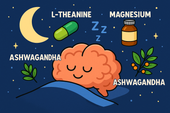
Nootropics That Promote Calm and Rest
Explore the world of calming nootropics — natural brain enhancers that promote relaxation, better focus, and deeper rest. Learn how L-Theanine, magnesium, ashwagandha, and other adaptogens help balance your nervous system, reduce stress, and support restorative sleep.
-

Best Natural Supplement Stack for Sleep
Discover the best natural supplement stack for deep, restorative sleep. Learn how nutrients like magnesium, L-theanine, glycine, and calming herbs such as chamomile and ashwagandha work together to relax your body, calm your mind, and improve sleep quality—naturally and safely.
-
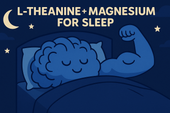
Combining L-Theanine and Magnesium for Sleep: A Calm Night, Naturally
Discover how combining L-Theanine and Magnesium can help you drift into deep, restorative sleep. Learn how this natural duo calms the mind, relaxes the body, and supports your nervous system—without grogginess the next morning.
-

How to Sleep Better After Intense Workouts
Struggling to fall asleep after a tough workout? Learn how to optimize your post-training recovery with nutrition, hydration, and science-backed sleep strategies. Discover how to calm your nervous system, balance hormones, and wake up fully recharged for your next session.
-

Ashwagandha and Valerian: A Bedtime Combo for Deep Rest and Emotional Reset
Discover the calming synergy of Ashwagandha and Valerian root, two natural sleep aids that help quiet the mind, ease anxiety, and promote deeper rest. Learn how this herbal duo supports the nervous system, balances stress hormones, and restores emotional peace — without next-day grogginess.
-
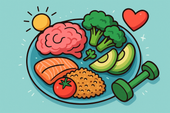
How to Create a Resilience-Boosting Diet
Discover how to build emotional and physical strength from the inside out with a resilience-boosting diet 🍎. Learn which foods stabilize your mood, how supplements like magnesium and omega-3s strengthen your stress response, and why pairing nutrition with breathwork and therapy creates lasting calm, focus, and vitality 🌿💪.
-

Best Teas and Herbal Blends for Calmness: Nature’s Way to Restore Inner Peace
Ashwagandha, the ancient adaptogenic herb, helps your body find balance during stress. Known as “Indian ginseng,” it supports cortisol regulation, boosts energy, and restores calm clarity. Discover how this powerful root promotes resilience, emotional balance, and steady vitality — one cup at a time. 🌸
-

Parenting and Emotional Strength: How to Raise Children Without Losing Yourself
Empathy is the bridge that connects hearts — the quiet power to understand, feel, and support another’s emotions without judgment. Learn how empathy strengthens relationships, enhances communication, and cultivates deeper compassion in everyday life. 🌿
-
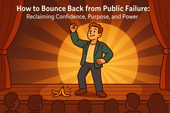
How to Bounce Back from Public Failure: Reclaiming Confidence, Purpose, and Power
Visualization is more than imagination — it’s brain training for resilience. By picturing calm, success, or healing, you activate the same neural pathways as real experience. Learn how daily visualization rewires your brain for confidence, emotional balance, and recovery from stress. ✨
-

Coping with Financial Stress Through Resilience: How to Stay Grounded When Money Feels Tight
Body awareness is the foundation of emotional resilience. By tuning into your body’s signals — tension, fatigue, or calm — you learn to recognize stress before it overwhelms you. Discover how mindfulness, gentle movement, and breathwork can deepen your connection with your body and restore balance from the inside out. 🧘
-

How to Stay Positive During Chronic Illness: A Guide to Emotional Strength and Hope
Creativity is more than art — it’s a form of healing. Whether through painting, writing, music, or small acts of expression, creativity helps release emotion, calm the nervous system, and reconnect you to joy. Discover how to use creativity as a tool for emotional balance, resilience, and self-discovery. 🌿
-
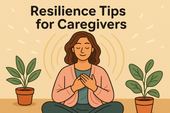
Resilience Tips for Caregivers: How to Stay Strong While Caring for Others
Joy isn’t the absence of pain — it’s the quiet strength to find light even in challenging times. Cultivating joy through small daily moments restores balance, releases stress, and reminds you of life’s beauty. Learn how to reconnect with authentic happiness, rebuild emotional energy, and nurture your nervous system through gratitude, presence, and play. 🌿
-

Building Resilience After a Breakup: How to Heal, Rebuild, and Rise Stronger
Social connection is one of the strongest predictors of emotional resilience. During difficult times, genuine relationships act as anchors — calming the nervous system, reducing stress hormones, and helping you regain perspective. Learn how cultivating real human connection can strengthen your mind, heart, and overall well-being. 🌿
-

How to Stay Emotionally Strong During Job Loss
Your emotions are powered by brain chemistry — a delicate balance of neurotransmitters like serotonin, dopamine, and cortisol. When these chemicals work in harmony, you feel calm, focused, and resilient. Learn how daily habits, nutrition, and mindfulness can support your brain chemistry and boost emotional well-being naturally. 🌿
-
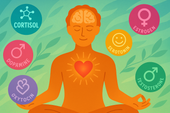
The Role of Hormones in Emotional Stability: How Your Chemistry Shapes Your Calm
Hormones shape more than your body — they shape your emotions, resilience, and sense of calm. From cortisol to serotonin, these chemical messengers influence how you react to stress, connect with others, and recover from challenges. Learn how to balance your hormones naturally to build lasting emotional stability and harmony within. 💫
-

Mitochondria and Emotional Energy: The Cellular Power Behind Your Mood
Breathwork is one of the most powerful tools for emotional regulation and cellular balance. Through intentional breathing, you can calm your nervous system, increase oxygen flow to the brain, and even support mitochondrial energy. Learn how conscious breathing connects body and mind — transforming stress into presence and emotional strength. 🌿
-

Inflammation and Its Impact on Mood Resilience: The Silent Link Between Body and Mind
Inflammation doesn’t just affect the body — it impacts the mind. Chronic inflammation alters brain chemistry, depletes serotonin, and makes emotional recovery harder. Learn how calming inflammation through nutrition, mindfulness, and sleep can restore balance, resilience, and a renewed sense of emotional strength. 💫
-
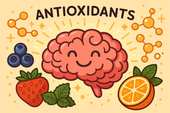
How Antioxidants Protect Emotional Well-being: The Hidden Link Between Oxidative Stress and Mental Health
Antioxidants do more than protect your body — they defend your mind. By neutralizing oxidative stress, antioxidants support serotonin, dopamine, and brain energy pathways that keep you calm, focused, and emotionally balanced. Discover how foods like berries, green tea, and dark chocolate nourish your brain, boost mood, and strengthen resilience from the inside out. 🌿✨
-
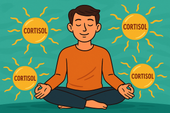
Why Cortisol Control Is Key to Resilience: Mastering Stress to Build Emotional Strength
Controlling cortisol — the body’s main stress hormone — is the secret to lasting resilience. When cortisol levels stay balanced, your mind becomes clearer, emotions steadier, and energy more sustainable. Learn how breathwork, mindset shifts, adaptogens, and daily rhythms can help you calm your stress response and build true inner strength. 🌞💪
-
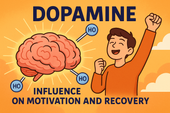
Dopamine’s Influence on Motivation and Recovery: Reigniting Drive and Balance
Healthy relationships are the foundation of emotional balance and resilience. Whether romantic, familial, or platonic, genuine connection releases dopamine, serotonin, and oxytocin — the brain’s “bonding trio” — helping us feel secure, motivated, and seen. Learn how trust, empathy, and communication not only strengthen your connections but also reshape your nervous system for deeper emotional well-being. 🌿🤝
-
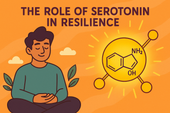
The Role of Serotonin in Resilience: How This “Mood Molecule” Shapes Emotional Strength
Serotonin — often called the “resilience molecule” — plays a vital role in how we handle stress, regulate mood, and recover from emotional challenges. Beyond happiness, this powerful neurotransmitter helps balance the gut-brain axis, stabilize the nervous system, and support emotional flexibility. Learn how nutrition, sunlight, mindfulness, and adaptogens can naturally boost serotonin and strengthen your emotional resilience. 🌞🧠
-
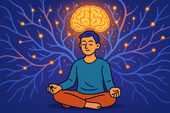
How Neuroplasticity Supports Emotional Growth: Rewiring the Brain for Resilience
Neuroplasticity is the brain’s built-in power to grow, adapt, and heal — and it’s the foundation of emotional transformation. Every mindful breath, compassionate act, or reframed thought strengthens new neural pathways that support resilience and self-awareness. Learn how your brain rewires through daily habits, helping you turn emotional challenges into opportunities for growth and calm. 🌿
-

Tai Chi and Adaptogens for Mind-Body Balance: The Art of Harmonizing Energy and Resilience
Alchemy isn’t just an ancient science — it’s a timeless symbol of transformation and inner balance. By blending the physical and spiritual, alchemy teaches us that change begins from within. Just as metals are refined into gold, we too can transmute emotional pain, stress, and chaos into clarity and strength through mindful practice and self-awareness. 🌙✨
-

Cold Therapy and Emotional Control: Training the Mind Through the Body
Cold therapy isn’t just for athletes — it’s a tool for emotional mastery. By exposing your body to controlled cold, you train your nervous system to stay calm under stress, improving focus, mood, and resilience. This article explores the science of cold exposure, its impact on hormones and the vagus nerve, and how ice baths and cold showers can help you build emotional control, one breath at a time. 🧊🧘♂️
-

How Music Influences Emotional Recovery: The Healing Soundtrack of the Mind
Neuroplasticity — the brain’s ability to rewire and heal itself — is at the heart of emotional recovery. Through mindful habits, music, therapy, and consistent mental stimulation, your brain can form new connections that support resilience and well-being. Discover how neuroplasticity turns pain into growth, helping you rebuild balance, focus, and emotional strength. 🌿
-
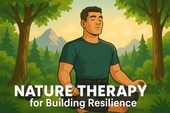
Nature Therapy for Building Resilience: Reconnecting With the Healing Power of the Earth
Nature therapy helps rebuild emotional resilience by reconnecting you with the healing rhythms of the Earth. From forest walks to sunlight exposure, nature restores balance to your nervous system, lowers stress hormones, and teaches emotional adaptability. Learn how spending time outdoors can enhance mental clarity, calm anxiety, and awaken your natural capacity to heal. 🌞
-
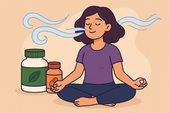
Breathwork Techniques That Pair with Supplements: The Ultimate Synergy for Stress Relief and Mental Clarity
Breathwork and supplements create a powerful mind-body synergy for stress relief, focus, and energy. By combining intentional breathing with adaptogens, nootropics, and calming nutrients, you can naturally regulate cortisol, sharpen mental clarity, and boost emotional balance. This guide explores the best breathwork techniques and supplement pairings to help you feel centered, calm, and energized from the inside out. 🌿
-
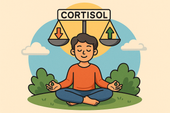
Why Cortisol Balance Matters for Emotional Strength
Balancing cortisol — your body’s main stress hormone — is essential for emotional resilience. When cortisol is chronically high, your mind stays stuck in survival mode, leading to fatigue, anxiety, and emotional instability. This article explores how nutrition, supplements, breathwork, and therapy can help restore healthy cortisol rhythms, regulate the nervous system, and strengthen your ability to handle life’s challenges with calm focus and emotional strength. 🌿
-
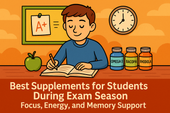
Best Supplements for Students During Exam Season: Focus, Energy, and Memory Support
Studying late into the night? Learn which natural supplements can boost focus, memory, and mental stamina during exam season — without the crash. From omega-3s to Bacopa and Rhodiola, discover your brain’s ultimate exam support stack. 🎓🧠
-
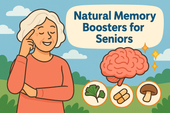
Natural Memory Boosters for Seniors: How to Keep Your Mind Sharp and Focused
Stay mentally sharp and confident as you age. Discover science-backed natural supplements and lifestyle habits that boost memory, focus, and brain longevity for seniors. 🌿🧠
-
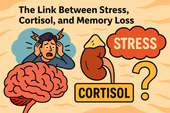
The Link Between Stress, Cortisol, and Memory Loss
Chronic stress can quietly erode your memory — and cortisol is the key culprit. Learn how stress hormones affect the brain, why the hippocampus shrinks under pressure, and how natural strategies can help you restore memory and mental clarity. 🧠✨
-
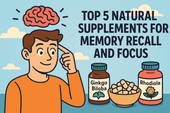
How to Build a Daily Supplement Routine for Memory Health
Want to sharpen your memory and stay mentally clear? Learn how to build a daily supplement routine for memory health — from morning focus to nighttime brain repair. Discover science-backed nutrients that boost recall, focus, and long-term cognitive resilience. 🧠🌿
-
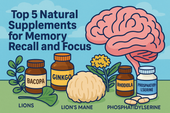
Top 5 Natural Supplements for Memory Recall and Focus
Looking to boost memory and concentration naturally? Discover the top 5 supplements — Bacopa, Ginkgo Biloba, Lion’s Mane, Rhodiola, and Phosphatidylserine — that enhance focus, recall, and long-term brain health. 🧠✨
-
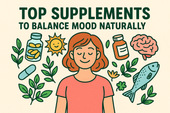
Top Supplements to Balance Mood Naturally
From omega-3s to adaptogens, discover the top natural supplements proven to support emotional balance, reduce stress, and promote inner calm — safely and effectively. 🌿✨
-
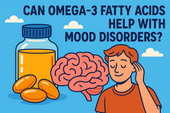
Can Omega-3 Fatty Acids Help with Mood Disorders?
Omega-3 fatty acids do more than support heart health — they can help balance mood, reduce depression, and calm anxiety. Discover how EPA and DHA nourish your brain, fight inflammation, and support emotional well-being from within. 🌊🧠
-

Vitamin D and Mood: The Sunshine Vitamin for Emotional Balance
Could the key to emotional balance be as simple as a little sunlight? Discover how vitamin D — the sunshine vitamin — influences serotonin, reduces inflammation, and helps you feel more positive and resilient year-round. ☀️💛
-

The Role of Magnesium in Reducing Irritability and Low Mood
Feeling on edge or emotionally drained? Magnesium could be the missing link between your body and your mood. Discover how this essential mineral reduces irritability, balances neurotransmitters, and helps your nervous system find calm again. 🌿✨
-
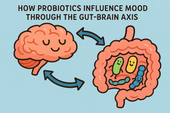
How Probiotics Influence Mood Through the Gut-Brain Axis
Discover how probiotics can do more than support your digestion—they can actually uplift your mood. This article explores the fascinating gut-brain axis and how balancing your gut bacteria through probiotics may help reduce anxiety, improve emotional stability, and support long-term mental well-being. 🌿🧠
-
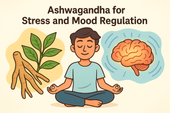
Ashwagandha for Stress and Mood Regulation
Discover how Ashwagandha, the powerful adaptogenic herb 🌿, helps your body manage stress and regulate mood. Learn how it balances cortisol, boosts GABA and serotonin, and supports emotional stability — helping you feel calm, focused, and resilient every day.
-
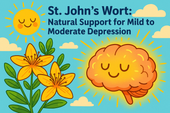
St. John’s Wort: Natural Support for Mild to Moderate Depression
Discover how St. John’s Wort, the “sunshine herb” 🌼, naturally supports mild to moderate depression. Learn how it boosts serotonin, balances mood, and promotes emotional resilience — with research showing its effectiveness compares to antidepressants, but with fewer side effects.
-
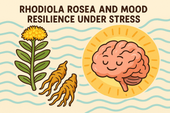
Rhodiola Rosea and Mood Resilience Under Stress
Discover how Rhodiola rosea helps your body adapt to stress 🌿. Learn how this powerful adaptogen balances cortisol, supports serotonin and dopamine, and strengthens emotional resilience — helping you stay calm, focused, and energized under pressure.
-

Chamomile and Lavender: Herbal Calm for Emotional Fluctuations
Discover how chamomile and lavender bring calm to emotional ups and downs 🌿. Learn how these two soothing herbs balance your nervous system, ease anxiety, and support restful sleep — naturally helping you find peace and emotional stability.
-
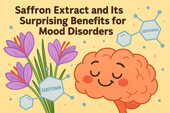
Saffron Extract and Its Surprising Benefits for Mood Disorders
Discover how saffron extract — the golden spice of joy 🌸 — can naturally support mood balance, ease anxiety, and lift mild depression. Learn what science says about its serotonin-boosting power, the ideal dosage, and how this ancient remedy compares to modern antidepressants.
-
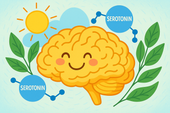
5-HTP and Serotonin: A Natural Path to Lifting Mood
Discover how 5-HTP naturally boosts serotonin 🌞 — the neurotransmitter behind mood, sleep, and emotional balance. Learn how this plant-derived compound supports happiness, reduces anxiety, and improves rest by helping your brain create more serotonin the gentle, natural way.
-
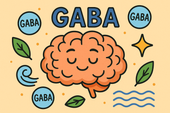
GABA Supplements for Reducing Anxiety and Mood Swings
Discover how GABA supplements can help reduce anxiety and balance mood naturally 🌿. Learn how this calming neurotransmitter works to quiet the mind, ease stress, and improve sleep — plus which nutrients and habits can boost your body’s own GABA production for long-term emotional stability.
-
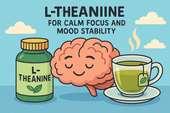
L-Theanine for Calm Focus and Mood Stability
Discover how L-theanine, the calming compound found in green tea 🍵, promotes focus, relaxation, and mood stability. Learn the science behind how it balances neurotransmitters, reduces stress hormones, and enhances clarity — helping you stay centered, calm, and productive without sedation.
-
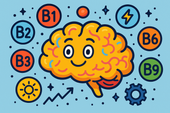
B Vitamins and Brain Chemistry: Supporting Energy and Emotional Balance
Discover how B vitamins power your brain chemistry ⚡. Learn how B6, B9, and B12 support serotonin, dopamine, and energy production — helping boost focus, mood, and emotional balance. From diet to supplements, explore how this vital nutrient group keeps your mind resilient and your energy steady.
-

N-Acetyl Cysteine (NAC) and Mood Disorders: What the Research Says
Learn how N-Acetyl Cysteine (NAC) supports brain health and mood balance 🧠. Discover how this antioxidant helps reduce oxidative stress, regulate glutamate, and improve emotional stability in depression, bipolar disorder, and anxiety — backed by cutting-edge psychiatric research.
-

Supplements for Bipolar Disorder: What May Support Stability
Discover the best supplements for bipolar disorder 🌿 that may support emotional stability and brain health. Learn how nutrients like omega-3s, magnesium, vitamin D, and NAC can help reduce inflammation, balance neurotransmitters, and complement traditional treatment safely.

















































